Sonos Roam
Two-minute review
Note: The Sonos Roam stopped working halfway through our tests, which is why we haven’t given it a star rating yet. Until we can confirm that our test unit had an isolated problem, we can't recommend the Sonos Roam. We'll be updating this review once we've received more information on what caused the fault in our device.
The Sonos Roam is the latest wireless speaker from the multi-room audio company, and the brand’s CEO Patrick Spence calls it “the smartest speaker we have ever built”.
Following in the footsteps of the Sonos Move, the Roam comes with both Bluetooth and Wi-Fi connectivity, which means it can work as a portable speaker as well as part of your wider multi-room Sonos system – and with Google Assistant and Alexa onboard, it doubles up a smart speaker too.
At $169 / £159 / AU$279, it’s the cheapest and smallest Sonos speaker to date, and therefore the most affordable entry point into the brand's multi-room audio ecosystem.
In spite of its (relatively) low price you’re getting a lot for your money here. Its slick design means the Sonos Roam won’t look out of place in your home, while a rugged, waterproof and dustproof build and a 10-hour battery life make it ideal for listening to music outdoors.
To make that transition from indoors to outdoors as seamless as possible, the Sonos Roam comes with a host of cool features. The first of these new features is Sound Swap – simply hold down the play button and the Sonos Roam will ‘throw’ your audio to the nearest other Sonos speaker available.
Another, Automatic Switching between Bluetooth and Wi-Fi connections, means you can simply walk into your home and the Sonos Roam, having previously been paired with your Bluetooth device, will connect to your Wi-Fi, without the need to set it up and reconnect manually.
Finally, the Auto TruePlay feature first introduced with the Sonos Move has been upgraded here, so the Roam will automatically tune its soundstage to your environment, whether you’re on Bluetooth or Wi-Fi.
Of course, all these flashy features would be pointless if the Sonos Roam didn’t sound great – but we’re happy to report that, despite its small stature, the Roam delivers a powerful sonic performance, with remarkably prominent bass.
Unfortunately, we weren’t able to test every aspect of the Sonos Roam. During our testing the speaker suddenly stopped working, and we weren’t able to turn it back on.
Right now, we’re waiting for a new model, so that we can establish whether this was an isolated issue – faulty units do slip through the net occasionally – which is why you won’t find a star rating at the top of this review.
For that reason, we’re neither recommending nor dismissing the Sonos Roam at this time, but as soon as we’re able to test our new model we’ll be sure to update this review with our definitive verdict.
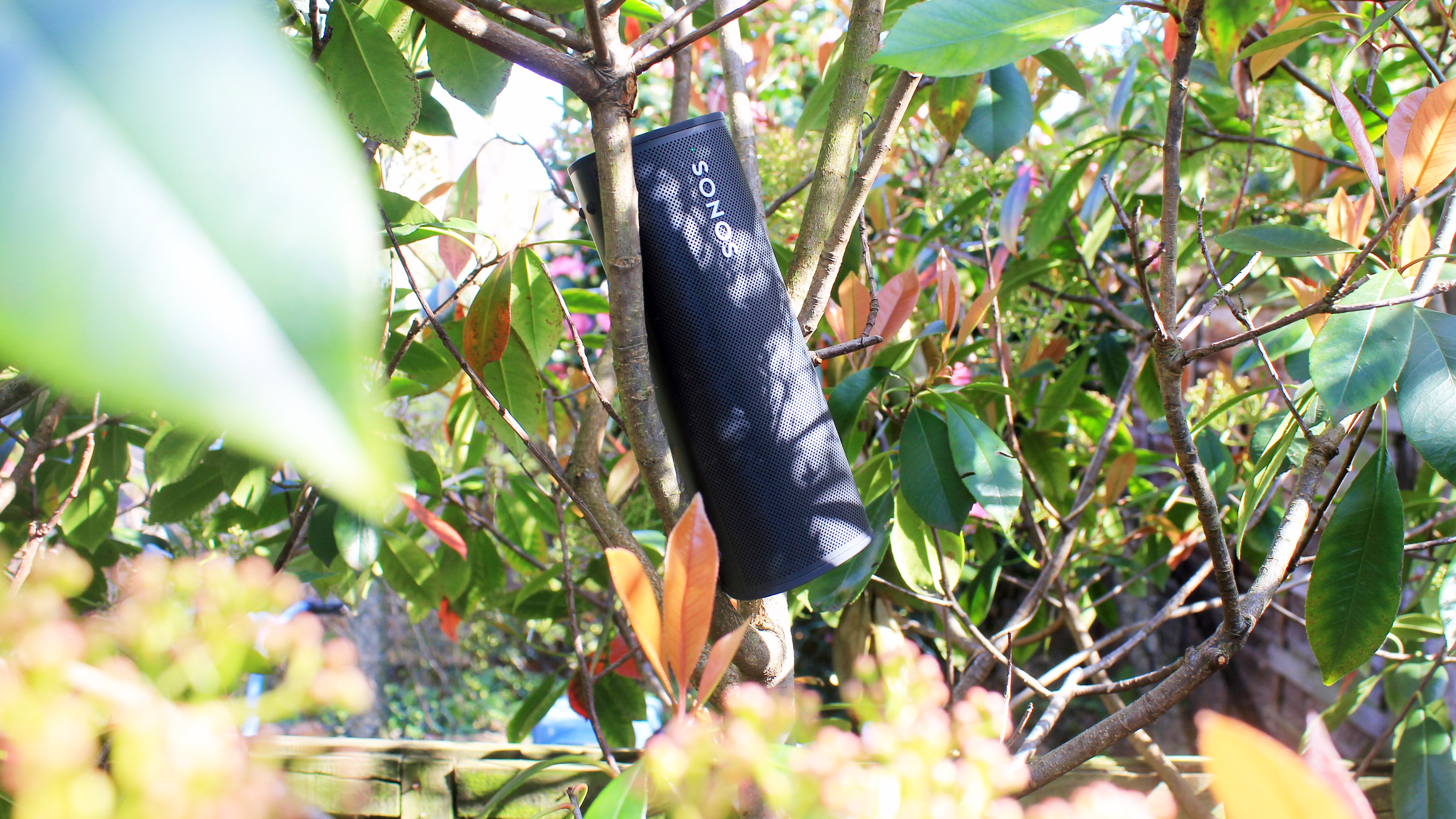
Sonos Roam price and availability
- Available to buy on April 20
- $169 / £159 / AU$279
- Cheapest Sonos speaker to date
The Sonos Roam will be available to buy on April 20, but you can preorder it now from the Sonos website for $169 / £159 / AU$279.
That price tag makes it the cheapest Sonos speaker to date in the US and UK, undercutting the Sonos One SL, which costs $179 / £179 (in Australia the One SL costs AU$269). It's also cheaper than Sonos' first portable smart speaker, the Sonos Move, which costs $399 / £399 / AU$649 – a price that puts that speaker firmly at the top end of the Bluetooth speaker market, although it earns that price tag thanks to its array of Sonos smarts and powerful audio.
If the Sonos Roam can live up to its ambitious specs, its lower price could make it a contender for the best Bluetooth speaker you can buy today – as well as the most accessible entry point to the wider Sonos ecosystem.
It’s still not cheap by any means though; one of our favorite Bluetooth speakers, the UE Boom 3, costs $129.99 / £129.99 / AU$199.95, although it doesn’t come with the smart assistant compatibility of Sonos’ latest device.
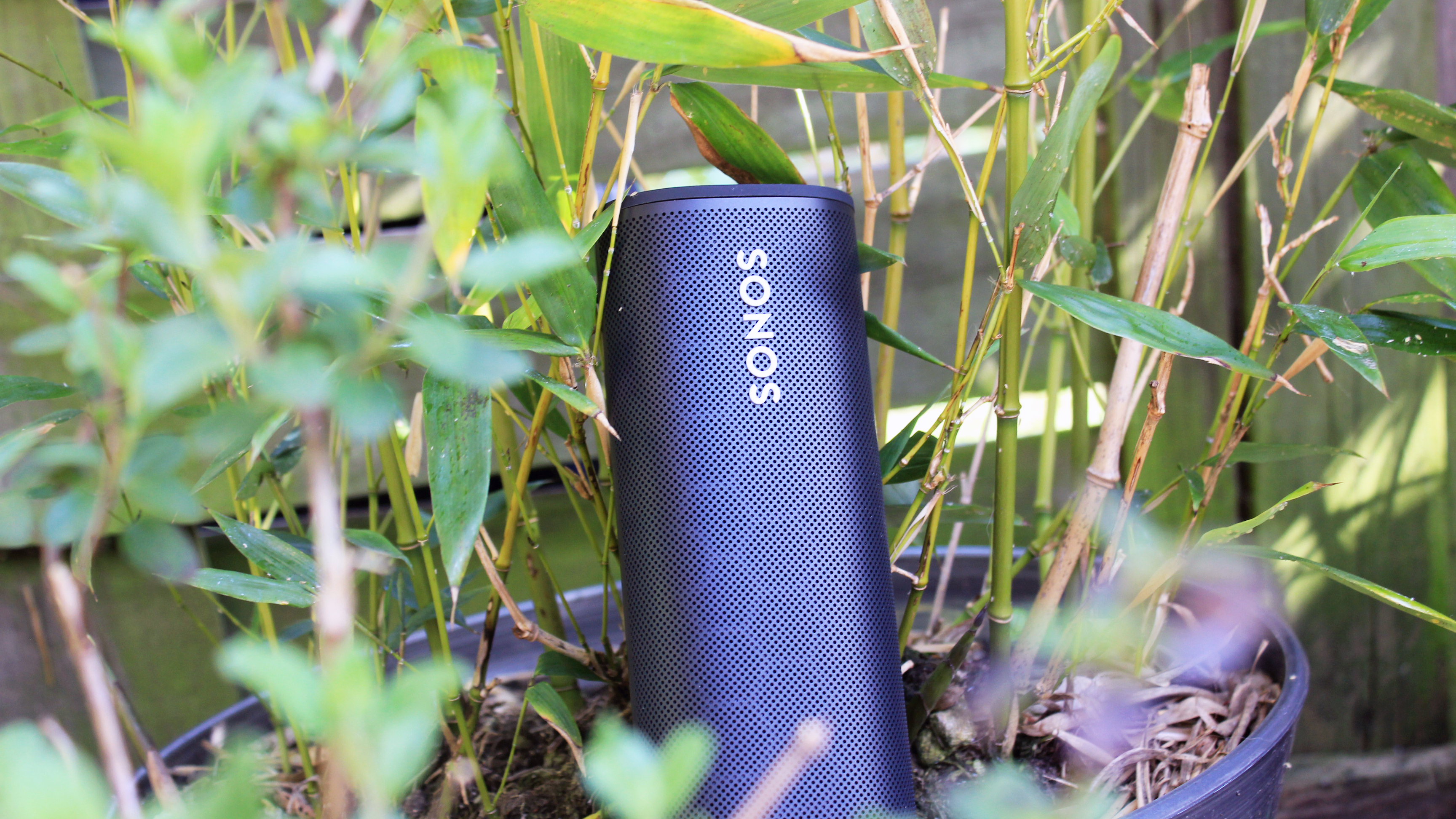
Design
- IP67 water-and-dust-resistance rating
- 0.95lbs / 0.43kg
- Rugged build
While the Sonos Roam retains the minimalist aesthetic of the brand’s previous devices, its design is still quite the departure for the audio company, with a focus on ruggedness and portability.
It’s longer and thinner than the comparatively squat Sonos Move, and is a similar size to a water bottle. It’s far lighter than the Move too, weighing in at 0.95lbs / 0.43kg, and you can easily hold it in your hand or sling it in a bag when on the move.
That light build, combined with an IP67 water-and-dust-resistance rating, makes it more easily portable than its predecessor, and rugged enough to withstand the elements. In fact, Sonos says it can survive being three feet underwater for 30 minutes.
On the front of the speaker is an embossed Sonos logo in white; above this, is an LED that indicates the speaker’s connection status, while an LED on the opposite end indicates battery life.
The control buttons are on the left end of the speaker when it’s placed horizontally – you can also orient the speaker vertically, with the buttons on the top. There are volume up and down buttons, a play/pause button, and a button for turning the microphone on and off. The play/pause button can be double-pressed to skip to the next track, or triple-pressed to go back to the previous track.
To pair the Roam with other Sonos products, you need to press and hold the play/pause button; keeping the button pressed for longer will activate the aforementioned ‘throw’ feature, switching your audio to the nearest other Sonos speaker. Slightly embossed, the buttons feel more tactile and easier to use compared to the touch-sensitive buttons on top of the Sonos Move – and they’re more accessible for those with visual impairments.
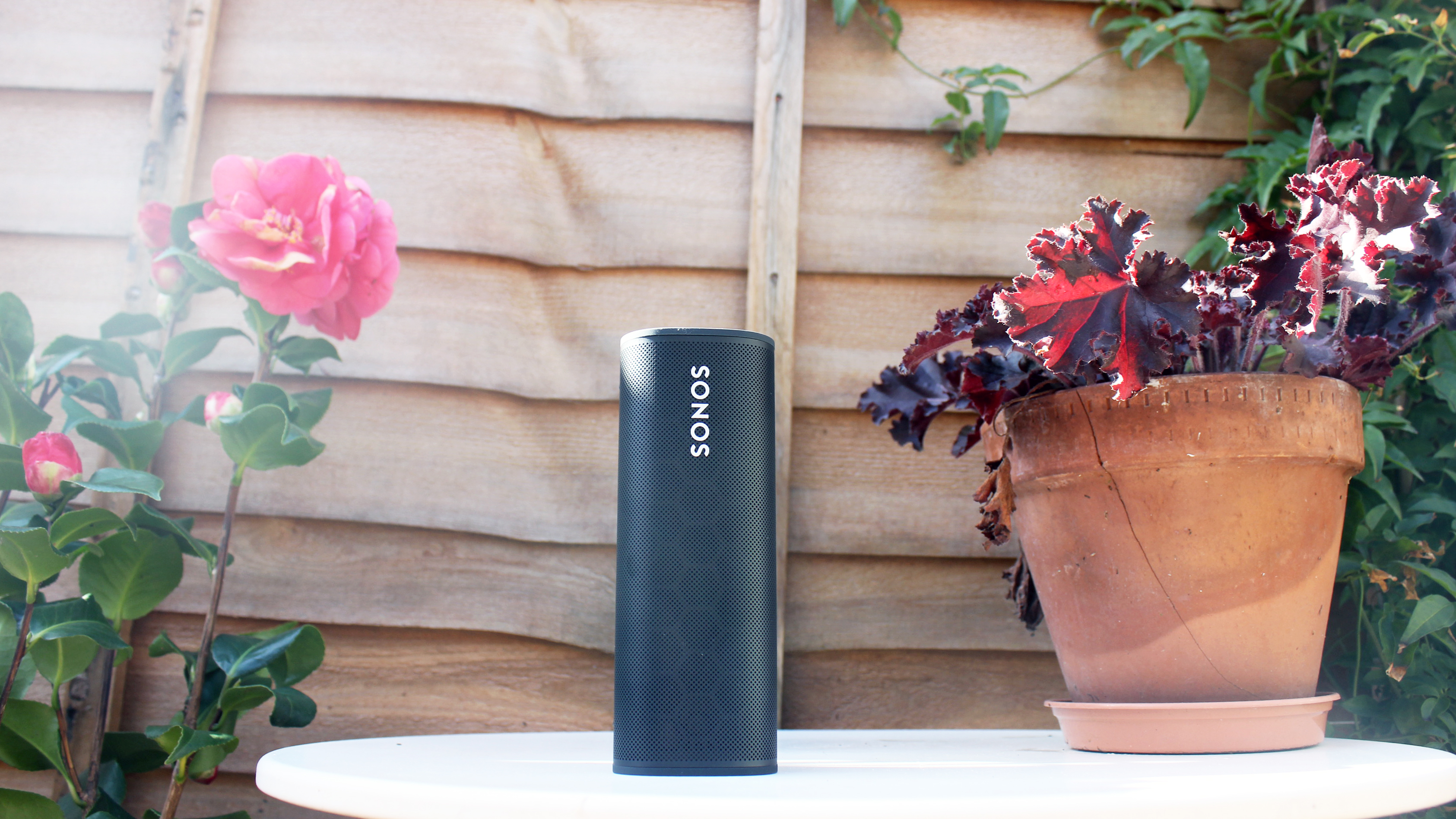
On the back of the speaker is the power button – you need to press and hold this until you hear the pairing tone to connect the Sonos Roam to a Bluetooth device. Beneath the button is a USB-C port for charging – you get a USB-A to USB-C connector in the box, but you’ll have to use your own adapter.
The ends of the speaker are slightly concave, which Sonos says increases its drop-resistance, and helps to prevent accidental button presses, so you don’t jack the volume up to 11 every time you brush past it.
The buttons themselves are described by Sonos as “tactile and slightly embossed”, with the raised design making it easy to hit play or change the volume. They’re really responsive, and we didn’t experience any lag in between hitting the button and the resulting action; the Sonos Move’s buttons are touch-sensitive, so the ability to feel the buttons will likely be a welcome feature for anyone with visual impairments.
Coming in 'Shadow' black and 'Lunar' white, the Sonos Roam boasts a “precision-engineered” honeycomb grille – it’s not a wraparound grille though, so don’t expect true 360-degree sound.
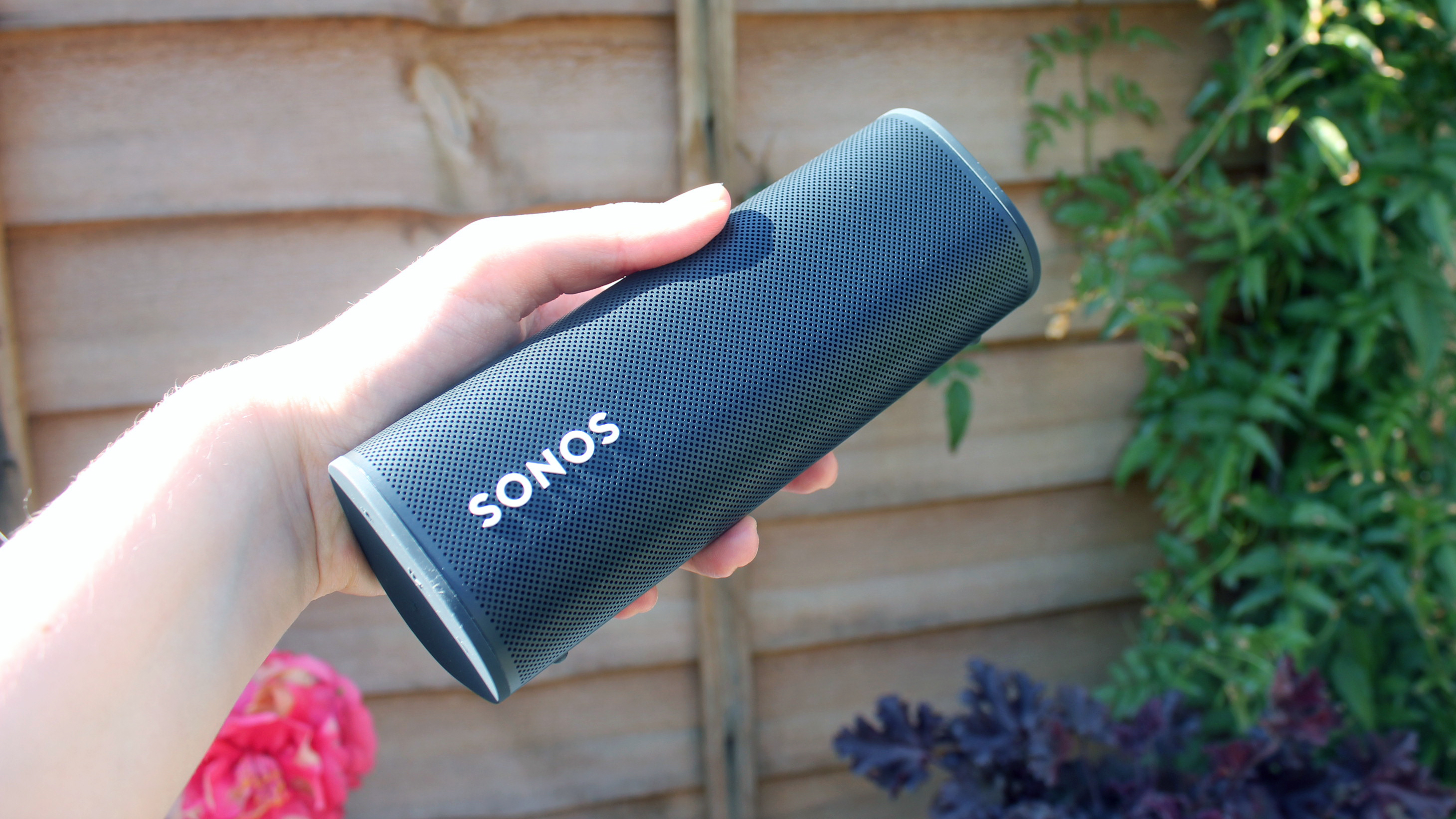
You have some flexibility when it comes to placing the speaker – the Roam can be positioned horizontally for stability on uneven ground, or vertically for a smaller footprint, with its triangular shape funneling sound upwards. If you do place the Roam horizontally on a flat surface like a table, small feet on what is, in this orientation, the bottom of the speaker help to keep it stable.
If you wish, you can buy a $49 / £44 / AU$79 wireless charging stand for the Roam. Simply place the speaker on the stand and it’ll snap into place with magnets, giving the Roam a permanent home inside yours.
Overall, we think the design of the Sonos Roam is really attractive. While many portable waterproof speakers are finished with garish colors and functional materials, the Roam retains the slick aesthetic of the brand’s home speakers, and its light and compact build makes it ideal for listening to music on the go.
If Sonos’ goal was to make a speaker that works just as well indoors as it does outdoors, it has succeeded.
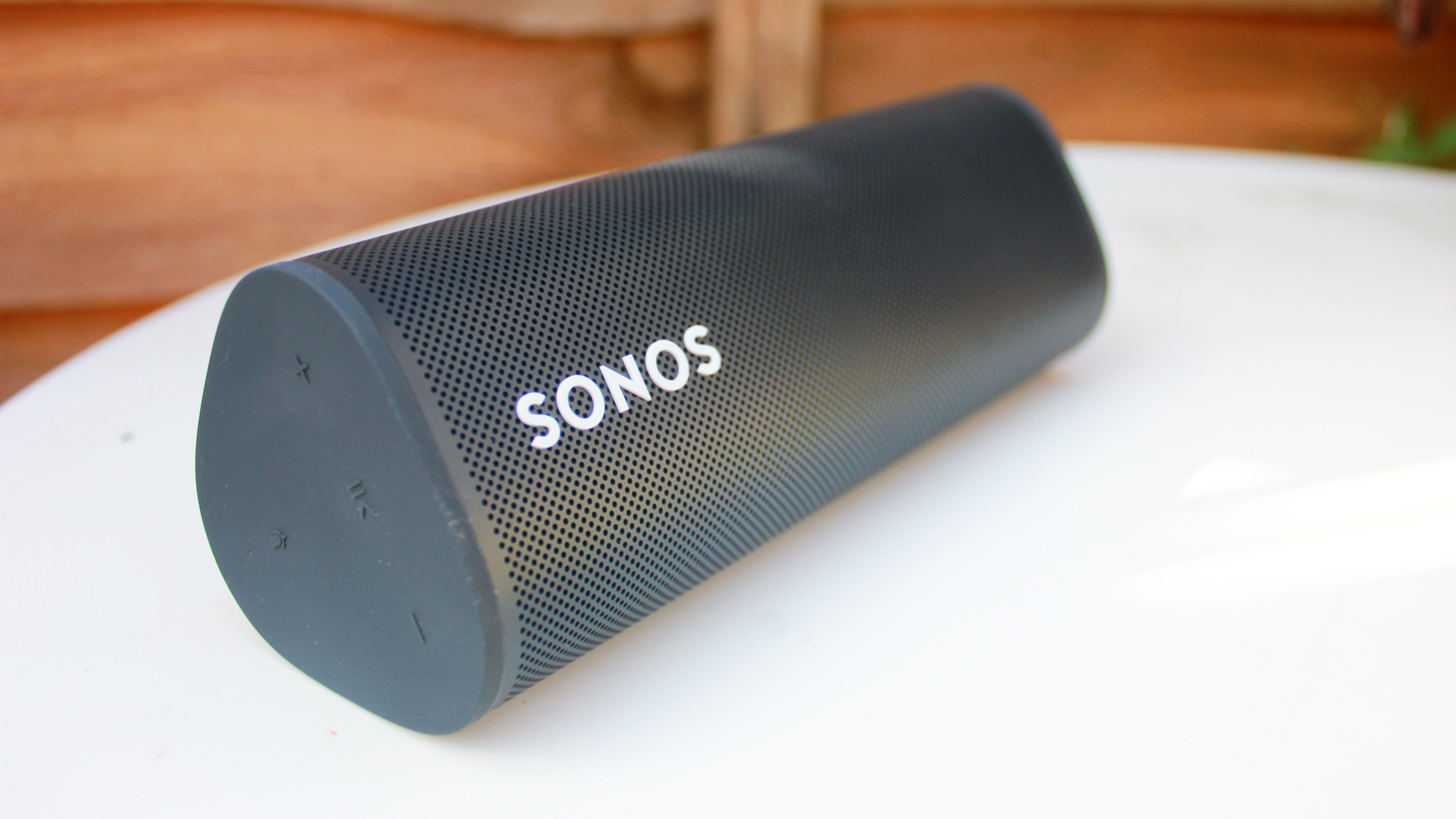
Audio performance
- Powerful sound
- Bass can be overwhelming indoors
- Comprehensive support for streaming services
In spite of its small size, the Sonos Roam delivers a powerful sonic performance with remarkably prominent bass. Inside the speaker are two class-H amplifiers, with a high-efficiency motor that Sonos says increases the power and range of the audio output, as well as a custom racetrack mid-woofer, and a tweeter.
While the sound isn’t as room-filling as that provided by the larger Sonos Move, the Roam comes pretty close, thanks to some clever design choices when it comes to the transducer.
The transducer transforms the electric signal into wave-shaped changes in air pressure – the sound you hear – and for that it needs space to move, as well as space within the speaker to pack in as much air as possible.
As Sara Morris, Principal Product Manager at Sonos explains, the team managed to keep the size down by making the transducer part of the housing itself, allowing the Sonos Roam to be “smaller, lighter, and still have a really good sound”.
Sonos has certainly succeeded in that regard. Listening to Childish Gambino’s Feels Like Summer, thumping bass lines drove the smooth synths, while the clear and rich falsetto vocals soared above the mix.
If we’re nit-picking, we’d like to hear a little more from the mids and lower trebles, as some of the detail is lost amid that powerful bass; in fact, if you’re using the Roam inside, you may want to adjust the EQ settings to increase the treble frequencies. Those powerful low frequencies work very well outside, where there are no walls for the sound to bounce off, but inside, it can be slightly overpowering.
As we’ve mentioned, we encountered some issues with the Sonos Roam during our tests, and as a result we haven’t been able to experiment with as many music genres as we would like. For that reason, we won’t give a definitive verdict on the audio quality until the issue has been resolved.
As for support for music services, there’s support for AirPlay 2 on Apple devices with iOS 11.4 and later, Spotify, Apple Music, Deezer, Tidal, YouTube Music, 7Digital, Sonos Radio, and more via the Sonos S2 app.
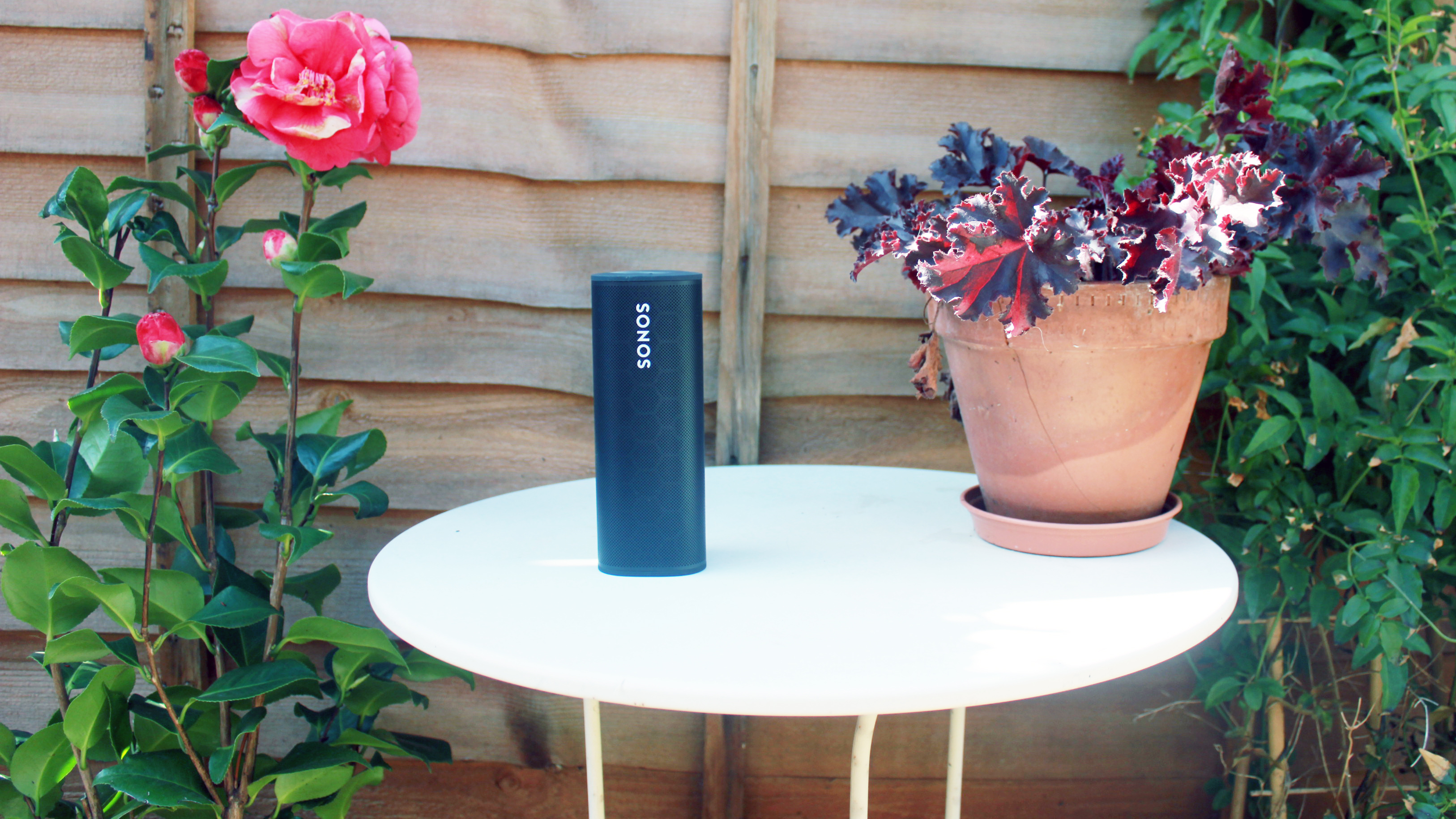
Sound Swap
- Throws sound from your Roam to another Sonos speaker
- Works in reverse
Sound Swap is one of the best features on the Sonos Roam, allowing you to ‘throw’ the music from your Sonos Roam to the nearest Sonos speaker available, and vice versa.
All you need to do is hold down the play/pause button until you hear the third tone (one more than if you were pairing two speakers), while holding the Sonos Roam close to the other speaker. Your music should then begin playing from the second speaker – or if you’re casting to a Sonos system, the full speaker setup.
We tried Sound Swap with our home cinema system, comprising a Sonos Arc, two Sonos One SL rear speakers, and the Sonos Sub, and it worked seamlessly. Being able to bring the Sonos Roam in from the kitchen to our living room and continue listening to our music on a surround sound system without messing around with our phone was wonderful.
As mentioned this feature also works in reverse, so holding down the play/pause button will cause the Roam to pick up audio that’s playing on another speaker or setup – handy when you’re taking the Roam out into the garden for example.
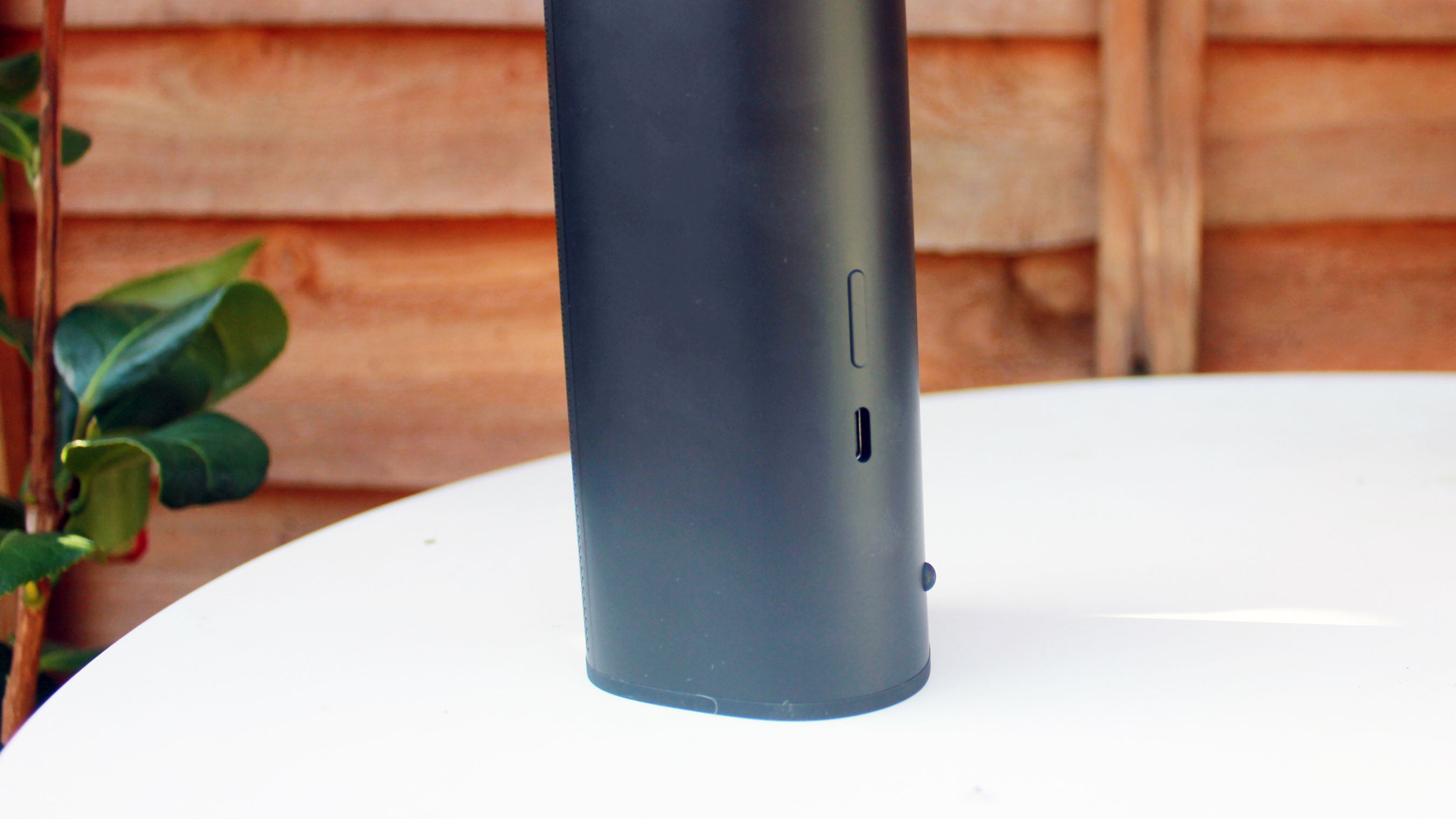
Connectivity
- Easy setup
- Bluetooth and Wi-Fi connectivity
- Automatic Switching
In spite of its focus on portability, the Roam is very much part of the Sonos ecosystem, which means you can use it as part of a wider multi-room audio setup, or pair two speakers for stereo sound. Pairing the Sonos Roam with other Sonos speakers can be done by simply holding down the play/pause button.
Unfortunately, though, you can’t use two Sonos Roams as a pair of rear channels for your home cinema system. We expected this to be the case, as the same is true for the Sonos Move – the company puts this down to sync issues, and the potential for a directional soundtrack to lose its focus if a speaker isn't optimally positioned in a room.
The Roam works with both Wi-Fi and Bluetooth 5, so you can use it in the home or on the move, and the new Automatic Switching feature should make this transition more seamless than ever, with the speaker automatically connecting to your Wi-Fi network when in range, and re-pairing with your phone when you’re out and about. Unfortunately, we were unable to test this due to the issues we encountered with the Sonos Roam
To start using the Sonos Roam you’ll need to connect it to your Wi-Fi network via the Sonos S2 app – this isn’t super-clear from the instruction leaflet included in the box, but you won’t be able to pair via Bluetooth without doing this first.
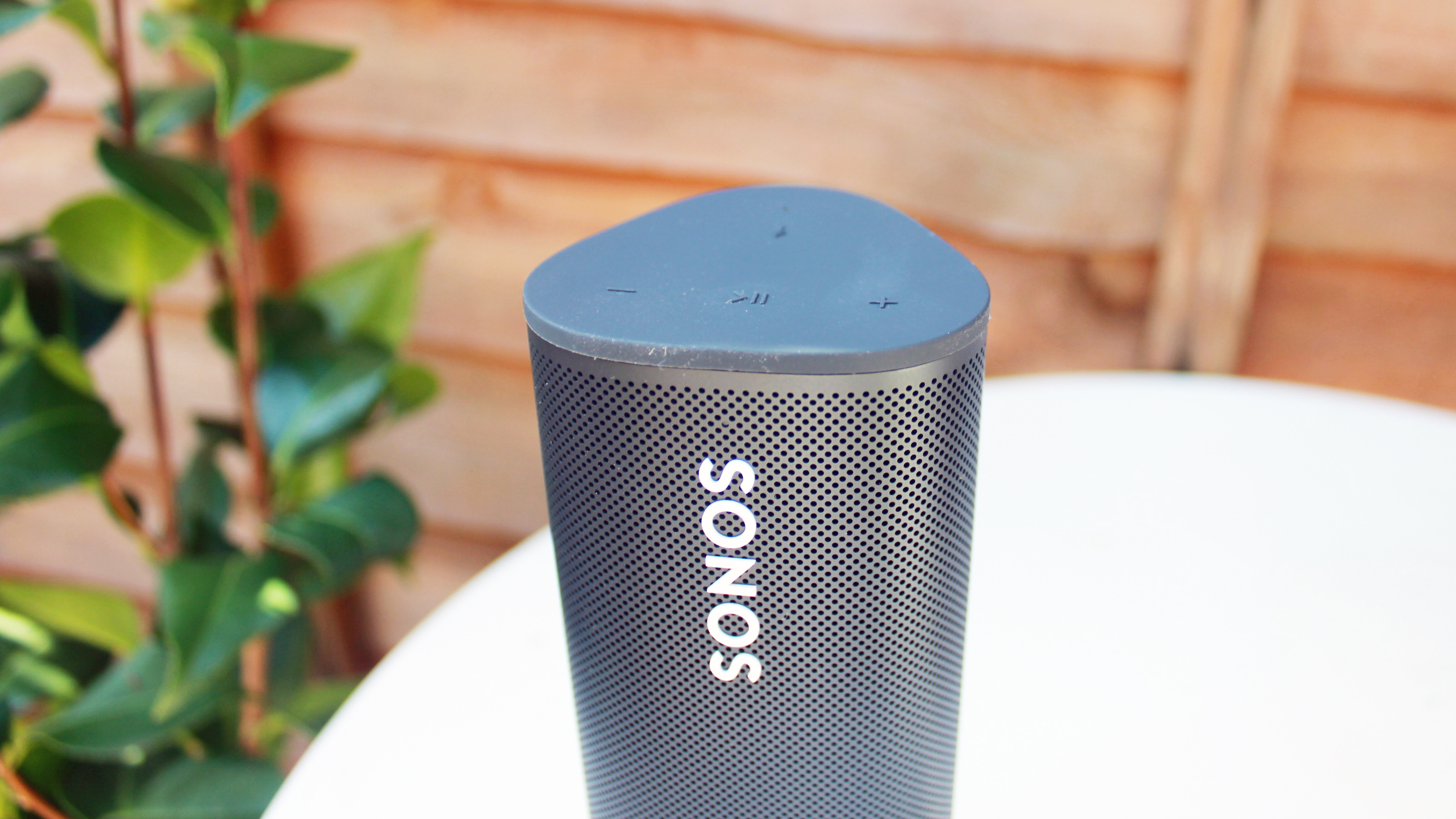
Setting up the Sonos Roam took us just a few minutes. To get started, you’ll need to download the Sonos app if you don’t have it already, and then tap Settings > System > Add Product.
When you begin connecting the Sonos Roam to your network, you’ll be prompted to enter an 8-digit code that you’ll find on the bottom of the speaker – this can either be entered manually, or automatically using NFC.
Once you’ve done this, you’ll hear a chime to let you know that the code has been entered successfully, and the speaker will begin connecting to your Wi-Fi network. You may also have to wait for the Roam to update, if an update is available.
Once connected, you can turn on Auto Trueplay, add your voice assistant of choice (Google Assistant or Alexa) and toggle other settings. There’s also a ‘product tour’ within the app, to help you get to know the Sonos Roam’s controls and features – it’s a neat touch that makes the setup process feel really easy.
Voice assistant
- Google Assistant or Alexa
- Smart home control
- Requires Wi-Fi
This was another aspect of the Sonos Roam that we were unable to test fully due to the issues we encountered. However, we can give an overview of these features.
Both Google Assistant and Alexa are onboard, and you can use your voice assistant of choice to control the speaker hands-free, control your other smart home devices, check your calendar, ask questions, and more – you will need to be connected to Wi-Fi to take advantage of these features.
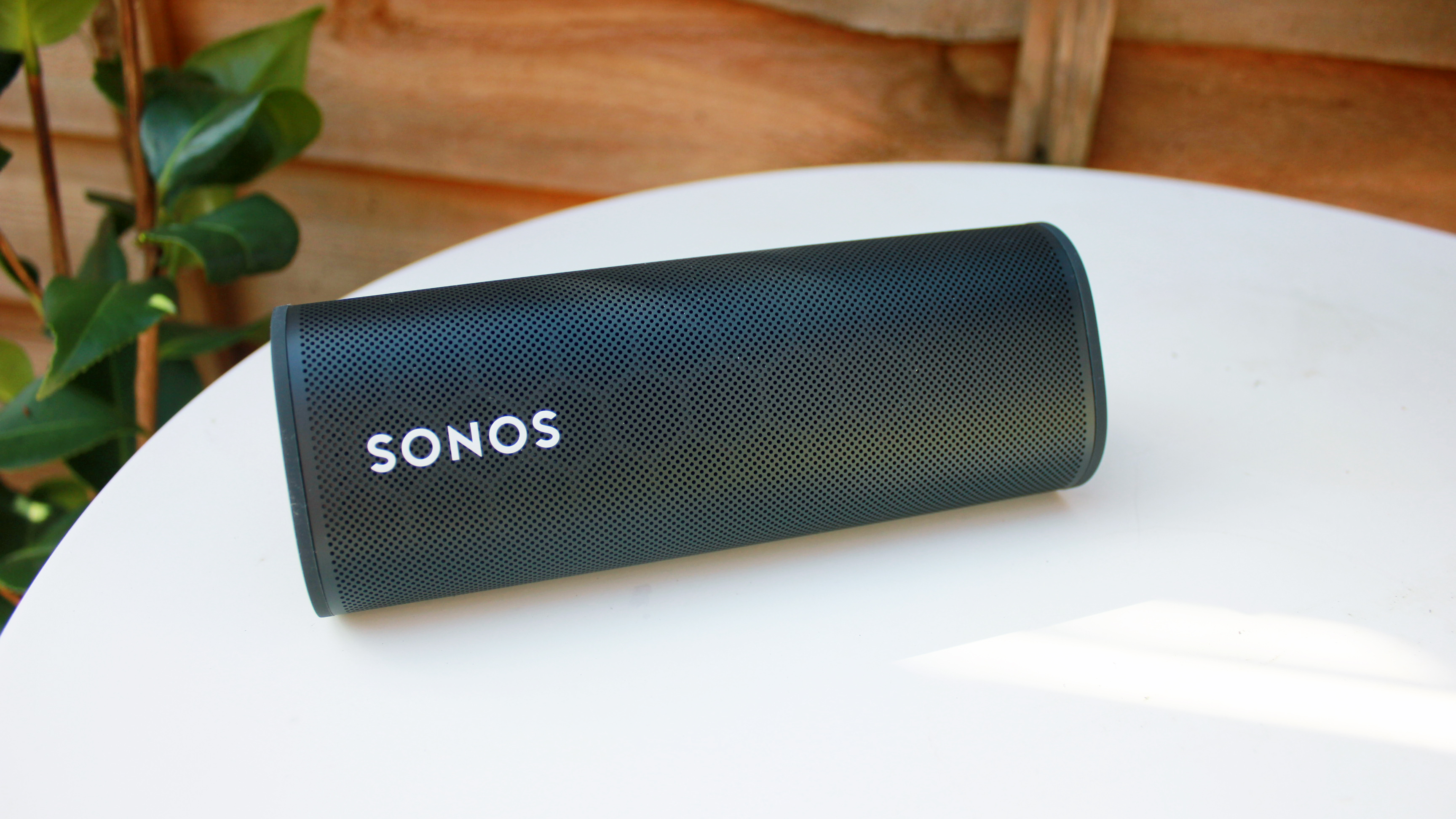
Battery life
- 10-hour battery life
- 10 days in sleep mode
- Supports wireless charging
The claimed battery life of the Sonos Roam is 10 hours, which we found to be about right in our tests, and the company says the speaker can last for up to 10 days in sleep mode – it’ll automatically go into sleep mode when you stop playing music.
That battery life almost matches the Sonos Move’s 11 hours, and that of most decent portable speakers on the market.
You can charge the Sonos Roam with any Qi-certified charging device, but if you want to keep it in the family, Sonos sells a dedicated wireless charging stand for $49 / £44 / AU$79, which features magnets to hold the speaker in place. You also get a USB-A to USB-C connector in the box, so you can use your own adapter.
What's next?
Without being able to test every feature of the Sonos Roam, we’re not comfortable giving a definitive verdict on the wireless speaker – even if it did perform exceptionally until it, well, it didn’t.
We’re certainly not writing it off though – faulty models can slip through the cracks, and we’re keen to find out whether the problems we experienced were isolated to our review unit, or whether they’re indicative of a wider problem with the speaker.
Still, with the Roam going on sale on April 20, Sonos has time to try to rectify these issues if they weren’t isolated to our model. For what it's worth, a Sonos spokesperson told TechRadar that, "the Roam’s hardware and sound experience are final for what customers will experience when the product becomes available on April 20".
"We are fine tuning Roam’s software experience with a few improvements that will roll out before the product becomes available to customers."
With every other aspect of the speaker working so well – the sound, the design, the new connectivity features – we’re hoping that the issues we encountered were a one-off, or if not, that they’re easily fixed. If so, the Sonos Roam could easily take the crown as the best portable speaker you can buy in 2021.
- Looking for more? Check out the best wireless speakers you can buy
0 comments:
Post a Comment